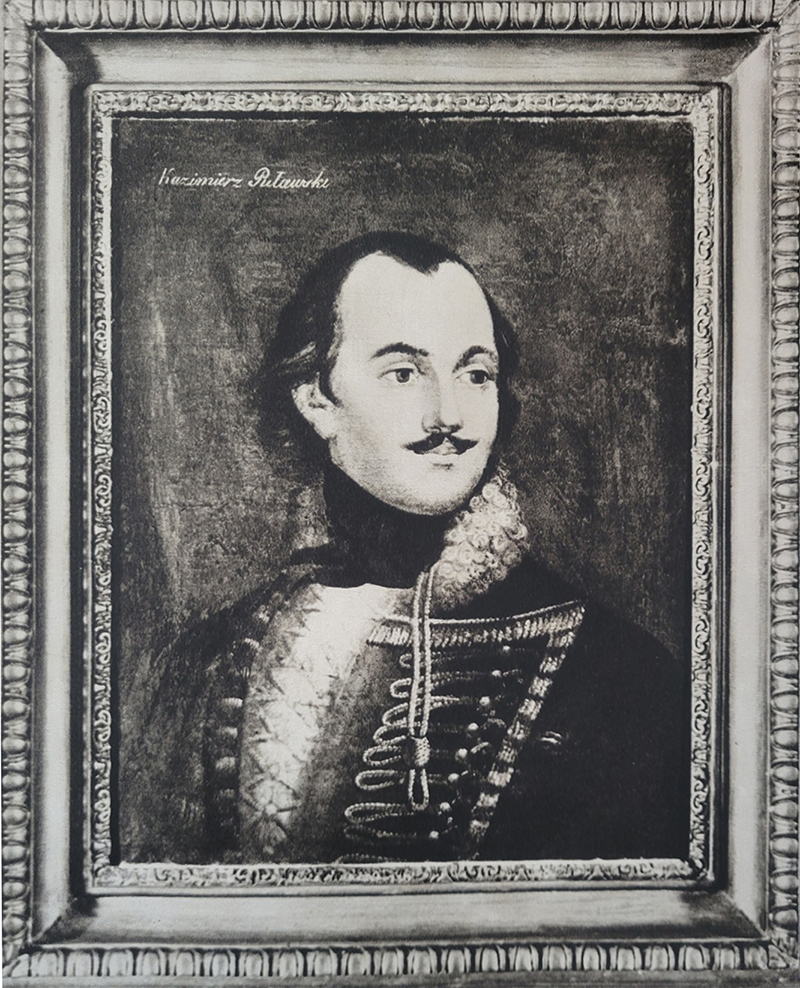
Kazimierz Michal Wladyslaw Wiktor Pulaski was born in Warsaw, Poland. Or perhaps it was Warka, nearby, but south of Warsaw. It appears to be Warka.
He was born on March 4, 5, or 6, 1745 or 1747. The most popular date is March 4, 1745.
He is often referred to as ‘Count’ Pulaski, but there appears to be no proof he ever bore that title. Before Poland stripped him of the title he did bear, he was the Starost of Zezulince.
He is either Kasimir or Casimir. Both are used in contemporary writings; ‘Casimir’ is the English spelling of the Polish name.
He was mortally wounded on the battlefield on October 9 and died on either October 11 or 15, 1779. His death came either on the Atlantic Ocean, on a river shortly inland of the ocean, at a French field hospital in Savannah, Georgia, or in South Carolina.
While presenting himself as a man and exhibiting male characteristics such as facial hair and a receding hairline, it is possible he was born with female characteristics, a condition known as intersex. It is possible – probable, even – that he was unaware of his condition.
This much is certain: he was a Polish nobleman, a military commander with the Bar Confederation in Poland, a Brigadier General with the Continental Army, a hero of the American Revolution, and ‘the father of the American cavalry.’
Pulaski County Gets A Name
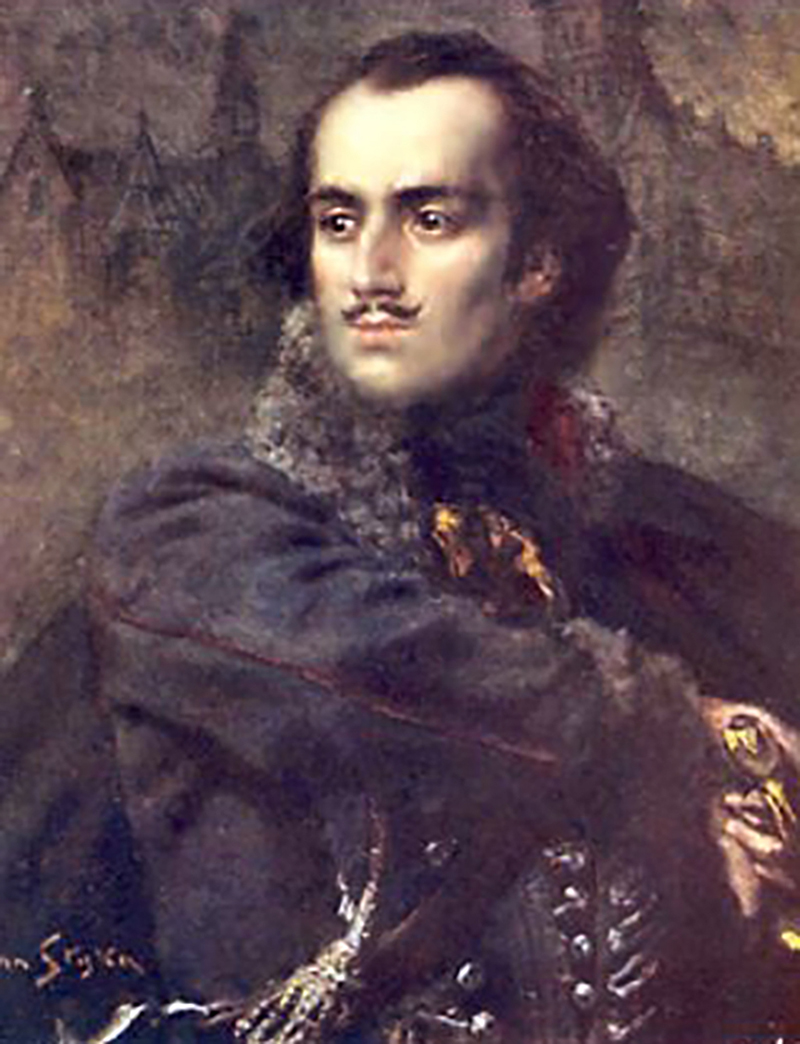
In 1835, a committee of the Indiana General Assembly named two newly formed counties for Polish heroes of the American Revolution, Pulaski and Tadeusz Kosciuszko. The English spelling is Thaddeus Kosciuszko. For some reason, the Indiana General Assembly disregarded both the Polish and English spellings when naming the county. They dropped the ‘z.’ Perhaps it was an accident.
Pulaski County was formed from land ceded by Native American tribes beginning in 1795 and ending with the Treaty of Tippecanoe in 1832. Rather than name the county for a Chief or notable person from the Potawatomi tribe – the tribe that brokered the final treaty, the treaty turning over the land upon which Pulaski County was formed – a person of Polish descent was chosen.
Pulaski was certainly deserving of the honor, but one would have been hard-pressed to find a person of Polish descent in the area. It should be noted that when enough settlers had moved in to vote for candidates to fill county offices, the county seat was named for a Potawatomi chief, Winamac.
But which Chief Winamac? And was the Native American for whom it was named even a chief? That is a story for another day.
Moving On To The Story Of Pulaski

The information is presented in summary form. It would take at least two semesters to teach his history, one concentrating on his European roots and another on the history of the American Revolution. This document will not be that long. I promise.
He Was Forced To Flee Poland After A Failed Revolution
With his father, Pulaski became involved in revolutionary affairs. Both were leaders in the Bar Confederation, Bar being the name of the town in which the seditious group took form. One could wax eloquent on Pulaski’s life before and during this time, but for purposes of this document, only a brief summary will be supplied.
Pulaski’s father was the Advocatus of the Crown Tribunal and the Starosta of Warka, a man of influence. A Starosta was a leader of a region, an overseer of crown land tenants and of land tenure, but without any real obligations. The absence of regulations against the accumulation of lands and wealth resulted in some nobles becoming immensely rich. Those with great wealth became known as ‘magnates.’
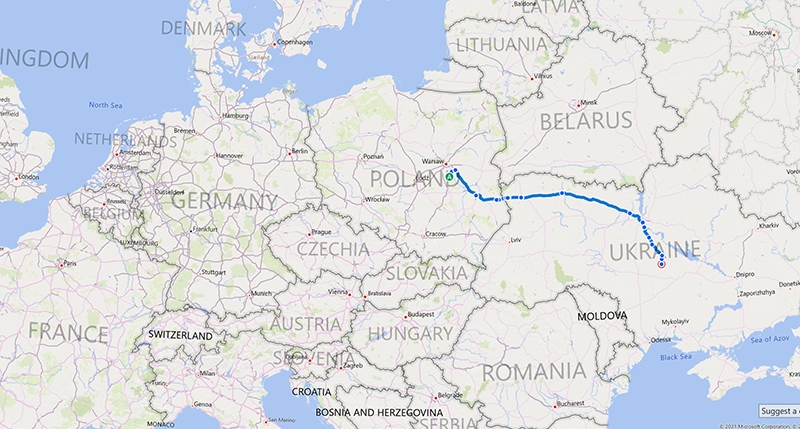
In 1763, Pulaski’s father conferred upon him the title of Starost of Zezulince, a town in the Podole region of Ukraine. Checking a map, it appears the elder Pulaski had a long reach. A photo is included.
The Bar Confederation (1768-1772) was an association of Polish nobles and magnates. Their intent was to defend the liberties of the nobility and to defend the Polish-Lithuanian Commonwealth from Russia and Russian influence. They viewed King Stanislaus II Augustus as a Russian puppet. The creation of the Confederation led to a civil war.
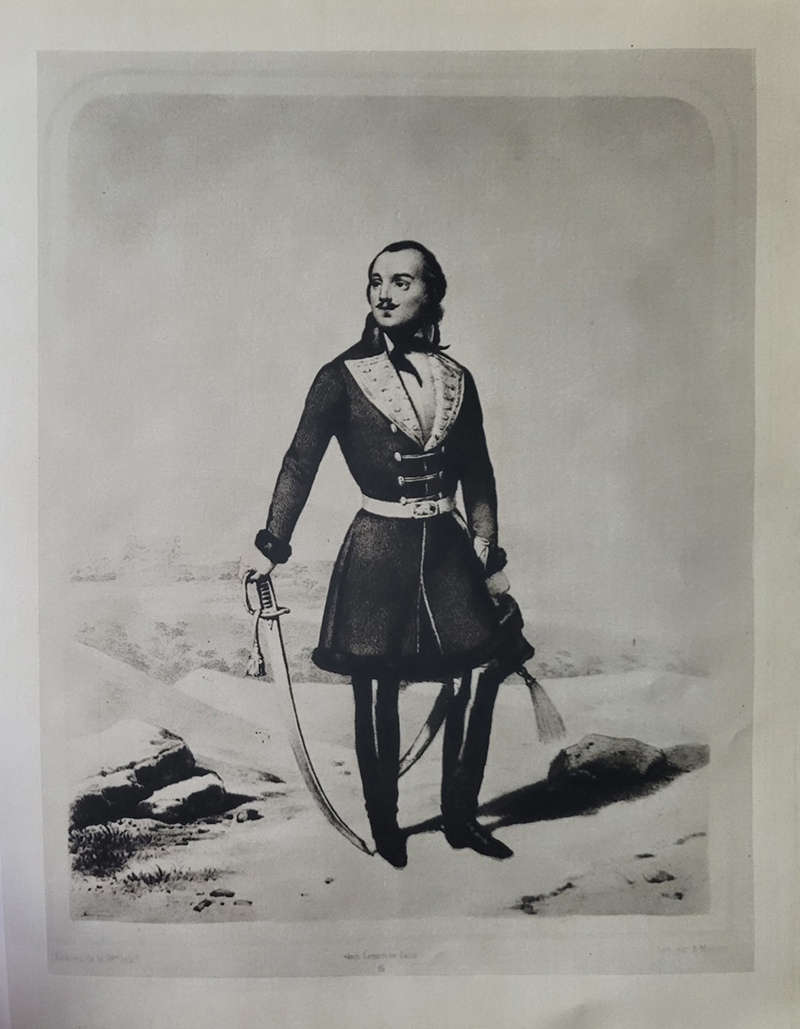
Pulaski was one of the leading military commanders of the Confederation. When their military was overwhelmed by Russia during regular battles, he and his fellow cavalry members turned to guerrilla raids on horseback. The Confederation had some military successes, but they were eventually overwhelmed.
Pulaski was forced to flee. A court verdict, declared in absentia, stripped Pulaski of his title, and his possessions were confiscated. He was sentenced to death. He escaped by sea to France, where he found himself in debt, imprisoned until friends gathered funds to arrange for his release.
Eventually, he was recruited by the Marquis de Lafayette and Benjamin Franklin, the American Ambassador to France, for service in the American Revolutionary War.
He arrived in Boston in July 1777. By September, he had been given the rank of Brigadier General in command of cavalry.
He Came To America Out Of A Sense Of Duty And Died For It
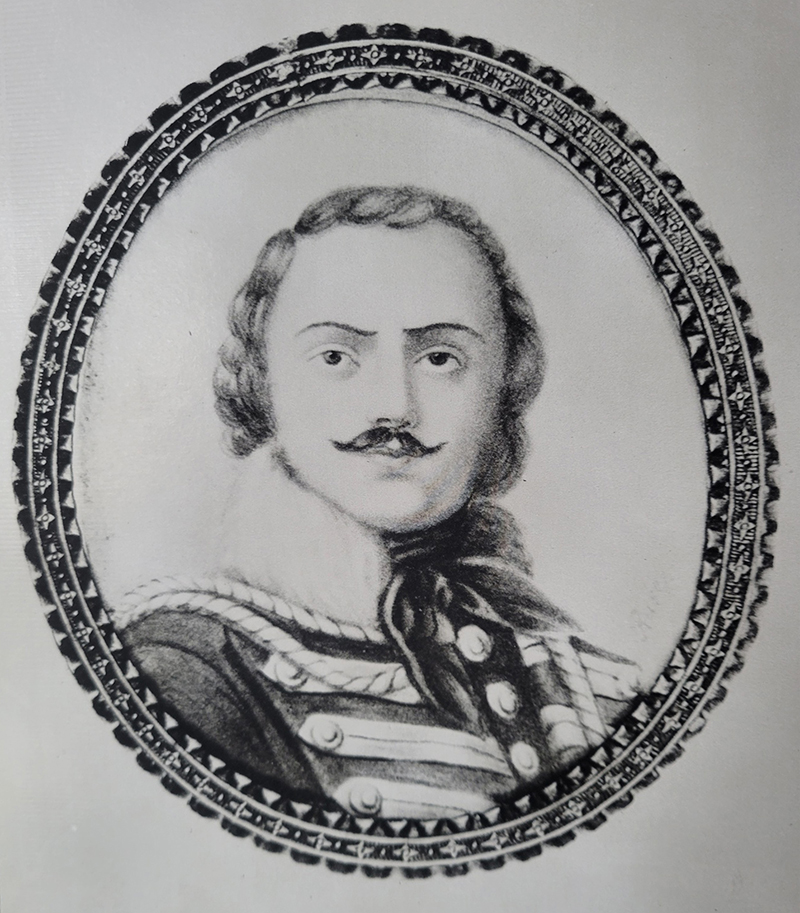
Offering his services to the American Revolution, Pulaski wrote to Washington, “I came here, where freedom is being defended, to serve it, and to live or die for it.”
Other sentiments are recorded follow:
- “Honor and a true desire of distinguishing myself in defense of Liberty was the only motive which fired my breast for the cause of the United States.” Pulaski to Colonel R. H. Lee, August 13, 1778.
- “I am a Republican whom the love of glory and the honor of supporting the Liberty of Union drew hither.” Pulaski to Congress, September 17, 1778.
- “An enthusiastic zeal for the glorious cause which animated America when I came over and a contempt for death first introduced me in your service. I could not submit to stoop before the sovereigns of Europe, so I came to hazard all for the freedom of America, and desirous of passing the rest of my life in a country truly free and settling as a citizen to fight for Liberty.” Pulaski to Congress, August 19, 1779, read October 1. Pulaski was mortally wounded on October 9.
On the 262nd anniversary of Pulaski’s birth, the honorable Marcy Kaptur, a member of the House of Representatives from Ohio, had these words. “Among his exploits in the American fight for freedom were saving George Washington’s life and the first successful defense of Charleston, South Carolina…. Pulaski remains a symbol of Polish courage, Polish initiative, and Polish friendship for the United States.”
Pulaski Served General Washington Well

While all of the following battles and issues deserve more explanation, for purposes of this document, Pulaski’s time in America will be bullet-pointed.
- August 20, 1777: Pulaski met George Washington in his headquarters in Neshaminy Falls, outside Philadelphia. He showed his riding skills and argued for cavalry over infantry.
- September 11, 1777: Pulaski was involved in his first military engagement at the Battle of Brandywine. When the Continental Army troops began to yield, he reconnoitered with Washington. He was ordered to collect as many of the scattered troops as possible and secure the retreat of the army. He subsequently charged the British, averted a disastrous defeat, and, by securing his escape, saved the life of Washington.
- September 15, 1777: Congress made Pulaski a brigadier general and gave him overall command of the Army’s cavalry. At this point, the cavalry had a few hundred men organized into four regiments. They were scattered among numerous infantry formations and were used primarily for scouting.
- October 4, 1777: Pulaski took part in the Battle of Germantown.
- Winter of 1777-1778: Pulaski spent much of the winter at Valley Forge. He argued that military operations should continue through the winter, but this idea was rejected by the general staff. He directed his efforts toward reorganizing the cavalry force, mostly stationed in Trenton.
- While at Trenton, General Anthony Wayne requested his assistance. They left on a foraging expedition into southern New Jersey. Pulaski and 50 cavalry troops rode south to Burlington, where they skirmished with British sentries on February 28. After this minor encounter, the British commander was convinced he was facing a much larger force than expected. He prepared to withdraw his troops across the Delaware River into Pennsylvania at Cooper’s Ferry.
- March 1778: Pulaski resigned his general command and returned to Valley Forge. This resignation was precipitated by a general discontent among American officers and even fellow Polish officers. Pulaski could barely speak English and his ideas of discipline and tactics differed greatly from his American counterparts. His personality was seen as ‘imperious,’ which did not help. He resigned when his suggestion to create a lancer unit was denied.
-
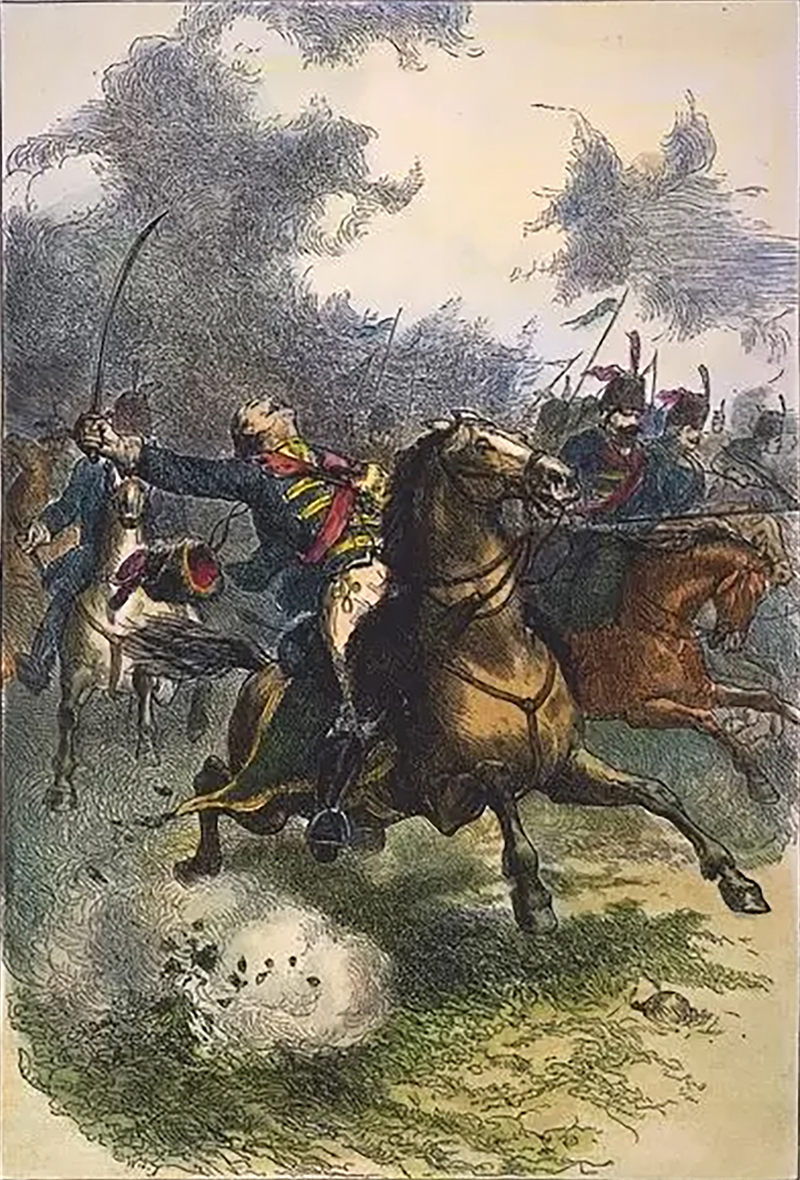
Pulaski is mortally wounded in the Battle of Savannah, October 9, 1779. Spring and summer 1778: Pulaski went to Yorktown where he met with General Horatio Gates. There, he suggested the creation of a new unit. Gates concurred and secured an appointment for Pulaski to his previous rank of brigadier general with a special title of “Commander of the Horse.” Congress authorized the formation of a corps of 68 lancers and 200 light infantry. They became known as the Pulaski Cavalry Legion.
- August 1778: The Pulaski Cavalry Legion numbered 330 men, both Americans and foreigners. British Major General Charles Lee commented on the high standards of their training. Pulaski complained of inadequate funds and obstructions by locals and officials. He was forced to spend his own funds when money was scarce.
- Fall/Winter of 1778-1779: Pulaski was ordered to take part in the punitive Sullivan Expedition against the Iroquois. On October 15, 1778, he and the Legion were engaged at The Affair at Little Egg Harbor. The legion suffered heavy losses. For those who are interested in the travesty committed against Native Americans, this era and this Expedition would be worth further exploration.
- Being dissatisfied with the Expedition and its consequences for Native Americans, Pulaski planned to leave the service and return to Europe. Instead, he asked to be reassigned to the Southern front. He was ordered to South Carolina.
-
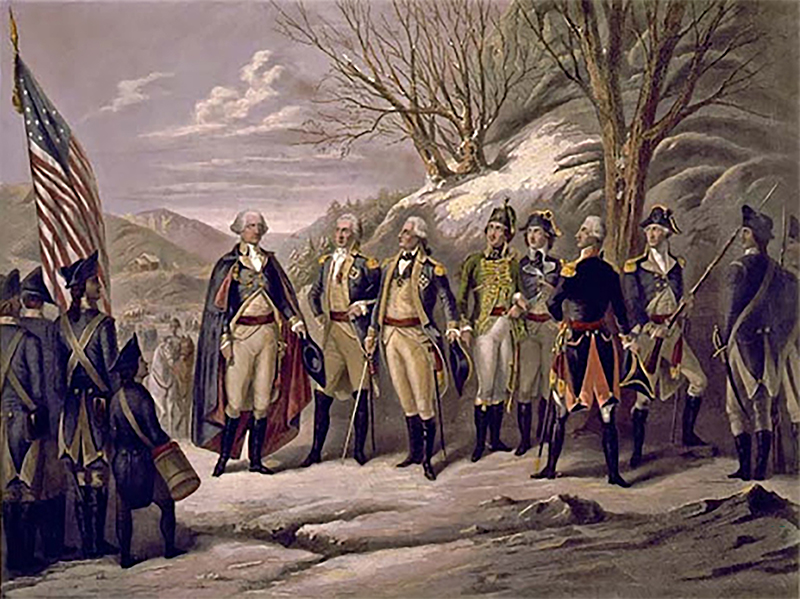
The Commander-In-Chief of the American Revolutionary Army surrounded by high-ranking commanders who came from Europe to fight for the American cause. Standing left to right: George Washington, Johann de Kalb, Frederick William von Steuben, Casimir Pulaski, Thaddeus Kosciuszko, Maria Joseph de Lafayette and John Peter Muhlenberg. This 19th century German illustration bears the symbolic title “Council of General at Valley Forge,” for the personages portrayed were never there together. May 8, 1779: Pulaski arrived in Charleston to find the city in crisis. In an engagement on May 11, the Legion, numbering about 60 men, was virtually wiped out. Pulaski was forced to retreat to the safety of the city’s guns.
- Summer 1779: Pulaski suffered with frequent bouts of malaria while stationed in Charleston but remained in active service. He was ordered to Augusta.
- October 9, 1779: While attempting to rally fleeing French forces during a cavalry charge, Pulaski was mortally wounded by grapeshot. He was carried from the field of battle and taken aboard the South Carolina merchant brig privateer Wasp under the command of Captain Samuel Bulfinch. He died without regaining consciousness.
He Is Known As “The Father Of The American Cavalry”
And yet, this is another contradiction. In fact, he is one of two European officers who hold that honor.
Michael Kovats de Fabriczy (often, simply, Michael Kovats) was a Hungarian nobleman. He offered his services in the cause of the American Revolution to the American Ambassador to France, Benjamin
Franklin, in 1777. Upon arrival in America, he joined Pulaski, who by then was a brigadier general and commander-in-chief of Washington’s cavalry. Pulaski’s cavalry was poorly trained, making the task of commanding the forces difficult. In 1778, Pulaski proposed a plan to form a training division of “hussars,” a European light-cavalry unit modeled on the 15th-century Hungarian light-horse corps. In his proposal to General Washington, Pulaski wrote, “There is an officer now in this Country whose name is Kovach. I know him to have served with reputation in the Prussian service and assure Your Excellency that he is in every way equal to his undertaking.”
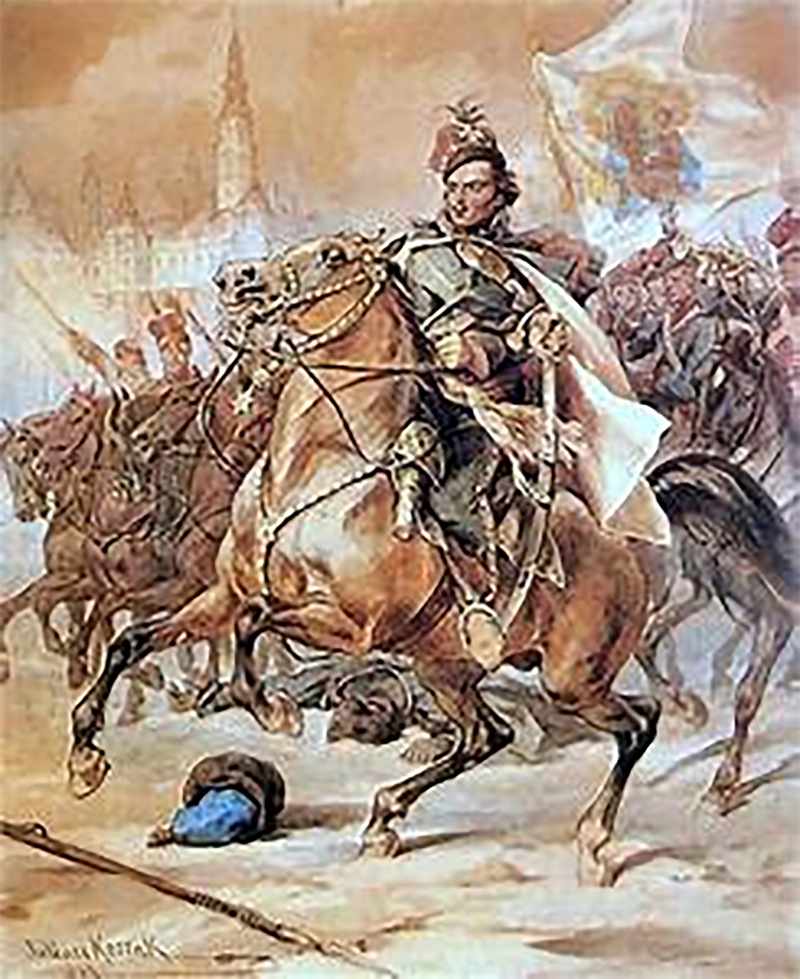
Pulaski’s Legion was commissioned in March 1778 and Kovats was named colonel commandant. By October 1778, the Legion consisted of 330 officers and men, in form, training and organization similar to their European counterparts. Colonel Kovats lost his life on May 11, 1779 in Charleston, South Carolina. His British opponent in the battle, Brigadier Major Skelly, paid Pulaski’s Legion the highest compliment, describing it as ‘the best cavalry the rebels ever had.’
Pulaski was certainly the most well-known cavalry officer and his involvement in the Revolution lasted longer. While his name comes to the top the most often as ‘the father of the American cavalry,’ it is because he recognized the skill in front of him. The calvary was his. He saw the need, and he used his influence with Washington to establish the Legion. Kovats used his experience to forge the battle-ready troops.
Pulaski And Kosciuszko, Both Of Polish Nobility, Probably Never Met
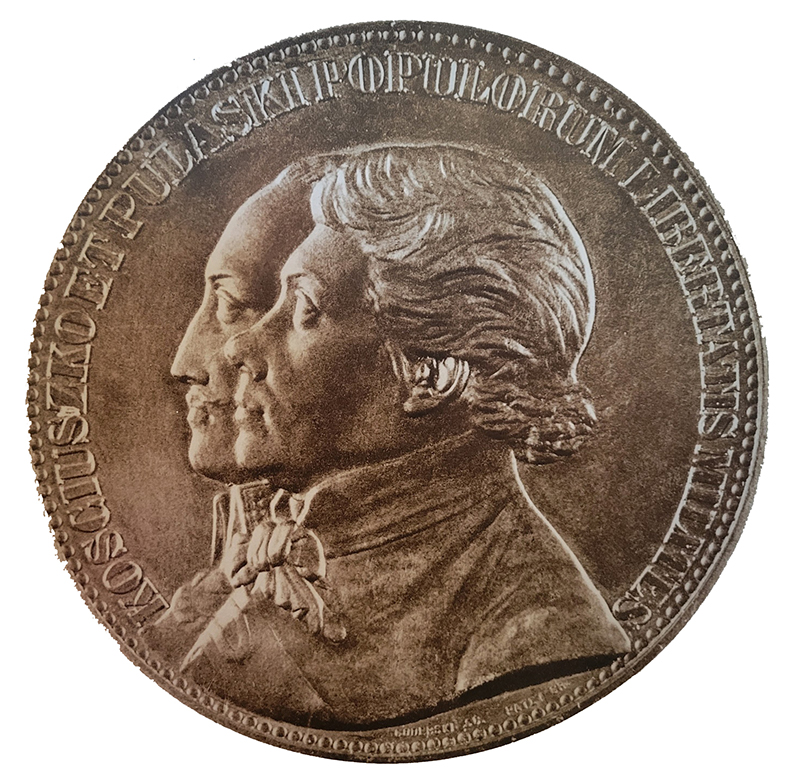
Pulaski and Kosciusko (spelled without the ‘z’) live very close to one another in Indiana as named counties. They were formed at the same time by the Indiana General Assembly.
Both were natives of Poland, were of similar age and background, and served General Washington and the Continental Army with distinction. While anecdotes mention the two meeting in America, it is doubtful the two ever met, in Poland or America. Pulaski died on the battlefield; Kosciuszko survived the Revolutionary War, returned to Poland, and died in 1817.
Pulaski Was A Man Of Mystery From Birth To Death
Despite his fame, there have always been uncertainties about Pulaski’s birth – the date and place – and his burial. Burial at sea is mistakenly recorded by many primary sources. According to contemporary accounts, witnesses stated he received a symbolic burial in Charleston but was later buried at sea. Captain Bulfinch claimed a wounded Pulaski was removed from the ship and taken to a French military hospital at Greenwich Plantation near Savannah, where he died and was buried.

In March 1825, during his grand tour of the United States, Lafayette personally laid the cornerstone for the Casimir Pulaski Monument in Savannah, Georgia. Read on for this monument’s part in the mystery.
Pulaski’s Remains Were Exhumed And Analyzed. Or Were They?
In 1853, remains found on a bluff above Augustine Creek on Greenwich Plantation were believed to be those of Pulaski. The bones were interred at the Casimir Pulaski Monument in Savannah, erected, as stated above, in 1825.
The skeletal remains were exhumed in 1996 and examined during a forensic study. The eight-year examination, including DNA analysis, ended inconclusively, although the skeleton was consistent with Pulaski’s age and occupation. A healed wound on the skull’s forehead was consistent with historical records of an injury Pulaski sustained in battle, as was a bone defect on the left cheekbone, believed to have been caused by a benign tumor.
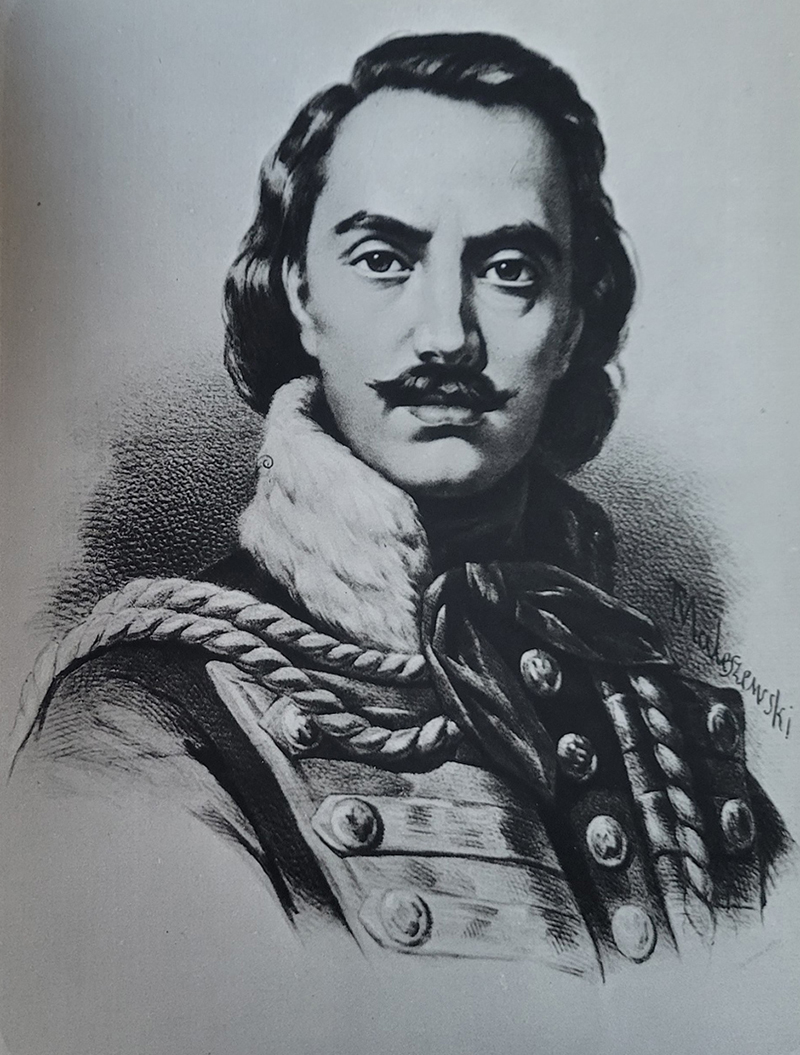
In 2005, the remains were reinterred in a public ceremony with full military honors, including Pulaski’s induction into the Georgia Military Hall of Fame.
Pulaski May Have Been Intersex
A Smithsonian Channel documentary makes the case that Pulaski may have been intersex, having a body that does not fit neatly into standard definitions of male and female. A study, the results of which were released in April 2019, concluded that the skeleton buried in Savannah was likely that of Pulaski.
The research used mitochondrial DNA of a grand niece, known injuries, and physical characteristics. The skeleton has some female features, including the facial structure and jaw angle, as well as a female pelvis.
Pulaski may not have known that he was different. He was baptized as a boy and presents as a man in portraits, with facial hair and a slightly receding hairline. Per the definition of ‘intersex,’ a variety of conditions manifest in any person. Intersex individuals may be born with ambiguous genitalia, but the condition also has less obvious variations. People who are intersex can appear male or female but have internal organs or hormones that are in contradiction to their apparent sex.
Pulaski Is Celebrated On Regional, State and National Levels
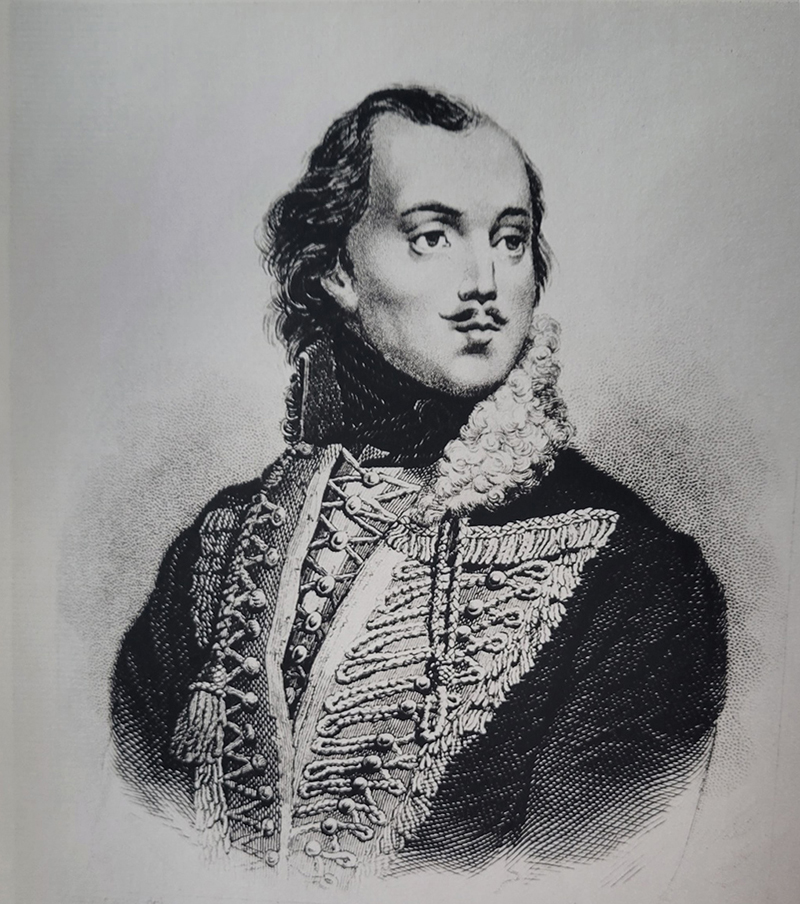
General Pulaski Memorial Day is held every year on October 11 by Presidential Proclamation. Since 1929, this date has been set aside to commemorate his death from wounds suffered at the Siege of Savannah and to honor the heritage of Polish Americans. Every President has issued a proclamation for the observance annually (except in 1930).
Several cities and states celebrate either in March, around the anniversary of his birth, or October, the anniversary of his death. Cities that celebrate Pulaski include New York City, Grand Rapids, Michigan, and Milwaukee, Wisconsin. In addition, he is commemorated in the Commonwealth of Kentucky, and the states of Wisconsin, Illinois, and Indiana
Pulaski Has Been An Honorary U.S. Citizen Since 2009
In 2009, Pulaski was made an honorary citizen of the United States. At the time, Pulaski was only the seventh foreigner given the distinction. He joined William Penn, a founder of the Pennsylvania colony, and his wife, Hannah; Marquis de Lafayette, a Frenchman who supported the American Revolution; British Prime Minister Winston Churchill; Swedish humanitarian Raoul Wallenberg, who rescued Jews during the Holocaust; and Mother Teresa.
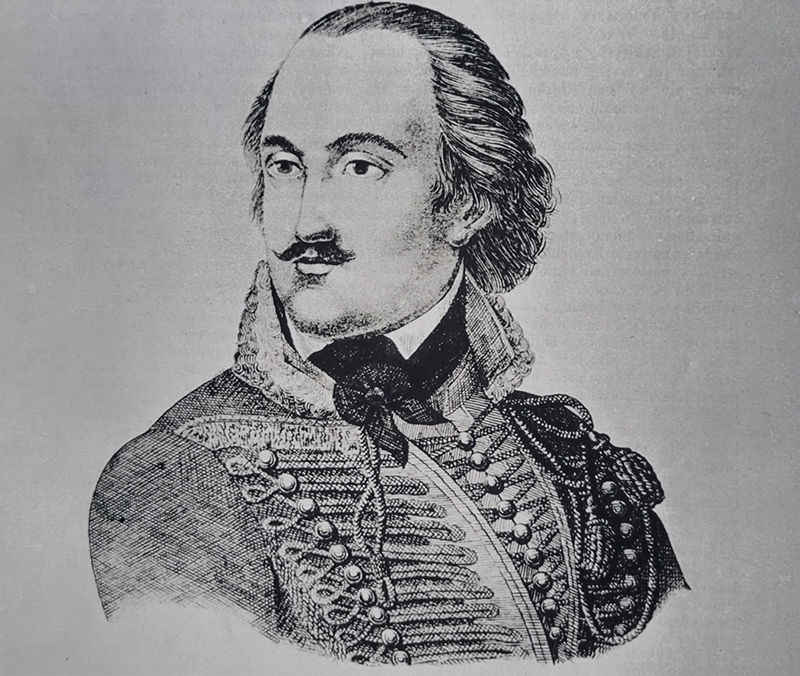
Pulaski Is Not Necessarily Celebrated In Pulaski County, Indiana.
For generations, the people of Pulaski County, Indiana, have seen the name of Pulaski on the Courthouse, in tax bills, in town halls, newspapers, and schools. The county paid each volunteer, first $25 and then $100, to enroll in the Union Army during the Civil War, and each outfit from the county took its name wherever it fought. In every election, whether county, state, or presidential, there have been returns from Pulaski County. And yet, with so many generations having lived in Pulaski County, Indiana, never has there been a painting or a bust of General Pulaski in the courthouse.
Pulaski County, Indiana, Stands Out In One Regard: The Way We Pronounce His Name
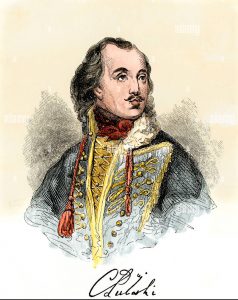 Residents of Pulaski County, Indiana pronounce the name of the county ‘pə-LAS-sky’, when the typical pronunciation is ‘pə-LAS-kee’. The genus of that pronunciation has some proven history and some family anecdotal lore.
Residents of Pulaski County, Indiana pronounce the name of the county ‘pə-LAS-sky’, when the typical pronunciation is ‘pə-LAS-kee’. The genus of that pronunciation has some proven history and some family anecdotal lore.
In 1839, the Indiana legislature appointed George P. Terry the first Sheriff of the county. Mr. Terry was a native of upstate New York. He moved from there to Logansport and in 1838 became one of the first white settlers of Monroe Township in Pulaski County.
His father, Charles, lost his life due to wounds suffered in the War of 1812, in a battle fought near Fishville, New York. Fishville was renamed Pulaski, pronounced ‘pə-LAS-sky.’
A history of the Terry family reveals that Mr. Terry stated, “If they call it Pulasky there, we can call it Pulasky here.”
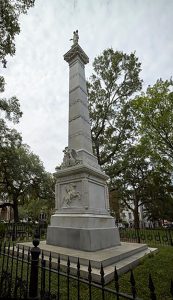 Pulaski, New York, is five miles from Port Ontario, on the bank of Lake Ontario. If one listens to a weather broadcast, which in the winter typically calls for a lot of snow, you will hear the town pronounced with a sky.
Pulaski, New York, is five miles from Port Ontario, on the bank of Lake Ontario. If one listens to a weather broadcast, which in the winter typically calls for a lot of snow, you will hear the town pronounced with a sky.
The residents of newly formed Pulaski County, Indiana had the ability to be well-read, but in that day and time, media outlets did not include the spoken word. With few to no Polish Americans in sight at that time, it would have been easy to follow the example of a man with experience.
Sources
- American Catholic Historical Society, American Catholic Historical Research: https://www.jstor.org/stable/44374799?seq=1#metadata_info_tab_contents
- American Polish Eagle: https://ampoleagle.com/pulaski-remembered-in-savannah-warka-and-buffalo-p9813-97.htm
- American Polish Eagle: https://ampoleagle.com/the-real-find-in-the-new-pulaski-research-p13316-191.htm
- American Revolutionary War: https://revolutionarywar.us/campaigns/1778-1782-northern-theater/
- Amino World History: https://aminoapps.com/c/world-history/page/item/casimir-pulaski/DbNQ_PqhNIM4nwDYGL8xZaedZP5JQm6BWw
- Chicago Tribune: https://www.chicagotribune.com/history/ct-cb-who-is-casimir-pulaski-day-road-20190304-story.html
- Counties of White and Pulaski, FA Batty Company, Chicago, 1883.
- Fort Pulaski National Monument in Georgia: https://www.nps.gov/fopu/learn/historyculture/casimir-pulaski.htm
- http://www.poles.org/pulaski_vs_pulaski/pulaski_v54s.html
- https://www.avotaynu.com/warka
- https://www.thoughtco.com/count-casimir-pulaski-2360607
